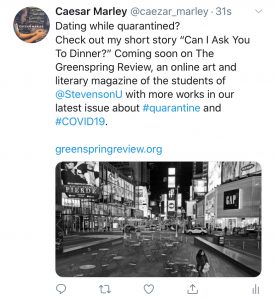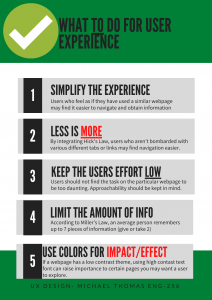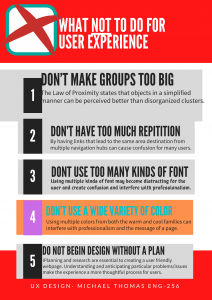Ring! Ring! Ring! Slap
I still try to maintain a daily routine, even during these hard times of this new coronavirus ordeal. Things have been awfully quiet around the neighborhood, especially here in Brooklyn as many people have fallen ill due to how fast this virus spreads. Hospitals are overcrowded and schools have closed to prevent the spread of this contagion. Even my job has closed down and asked us to start working from home, allowing me to care for my younger brother Terrance, though he’s been driving me crazy as well.
“Why do you still have that loud ass alarm clock going off this early? It’s been two weeks since you stopped working, learn to chill a little bro,” said Terrence as he barges through the door.
“Routines are important to stay in touch with the world,” I replied. “There’s always something to do, can’t just sit around on your ass all day, let’s see what school work you got going on today-”
“N-O-T-H-I-N-G, I’m trying to get my team more wins in this game and-”
“Did you finish your math from yesterday?” I said cutting him off.
“Yo, you’re not mom or dad Allen,” says Terrence with a little sass in his voice while walking away. “so just chill stop being annoying. You are barely here and just because mom and dad aren’t here doesn’t make you have to ‘step up.’”
Getting Terrence to buckle down and do his work has been like pulling teeth. Our parents travel often between mission work and business trips, leaving our parents quarantined over in Africa until cases begin to die down enough to allow air travel in their country. We still talk to them, recently just celebrating my 21st birthday over FaceTime while learning about what things needed to be done at our home here in the states. Though schools have been out, I have been trying to express to him how this is a good time to get ahead of everyone else and give yourself an advantage in school. But what 14 year old wants to hear this now, especially in times like these? I have to ease into the routine with him and hope he follows.
I begin getting ready for the day while saying to Terrence, “Alright, first of all, watch your tone. Second, let’s do our morning workout, eat breakfast, and then finish whatever schoolwork you gotta do and I’ll do whatever work that I have to do. Then we can chill the rest of the day. Sound good?”
“I mean, I guess,” says Terrence begrudgingly.
We begin tackling our day with our newfound ‘quarantine exercise regimen’ that we compiled with all the workouts we learned throughout the years, beginning with our legs. Normally, our neighbors wouldn’t fare well with the noticeable banging from our movements on the floor, but given the circumstances, I think they have begun to take a liking to our noise to feel less alone.
Following the workout, we have breakfast while watching Netflix. We have a running tradition of exchanging who gets to select the show to watch. This time, Terrence put on The Office, a show that pretty much anyone can get on board with. As we watch a few episodes, I began to realize that Terrence is starting to get into some of his “work-time” thinking that I’d forget, but I stop the show and get him into his work.
Though I have work on my own that I have to do, I sneaked outside for a quick smoke on our balcony before I got started, trying to not let Terrence notice my sudden disappearance. While on the balcony, I noticed a woman on a rooftop across the street doing morning stretches. They weren’t ordinary stretches from a power lifter, or athlete, but looked like stretches of a dancer of some sorts. She was bundled up to start, but throughout the routine took off layer after layer until she seems to be doing her routine at full speed, doing angelic jumps and high leg kicks all on a rooftop. She noticed me observing, and gave me a wave. I decided not to stick around much any longer as I felt that I might have been creeping a little bit., I responded with a wave and headed back inside.
Later throughout the day, I began helping Terrence with his math work. Pre-calculus is an area that I barely remember myself, but luckily Terrence is smart enough where I just am a means for him to make sense of what he is learning. While Terrence is working, I notice that the same woman is outside still, now on a blanket while reading a book. It’s unusual that I have been in this apartment for so long, yet I am just now noticing people being on a rooftop. Terrence notices me giving him a half-ass ear toward his work and says, “Why are you eyeing that lady down?”
“What you mean?” I replied. “Tell me about this matrix-”
“Nah nah, we gonna be locked up in this house for the next few months, so you might as well shoot your shot with her.”
“How?’ I asked in pure confusion. “We supposed to be social distancing, not knocking on each other’s doors.”
“You give her your number-”
“T, how?”
“I can put your number on my drone, fly it over, and you guys can figure it out from there.” Terrence doesn’t have a bad idea quite frankly, and honestly, I have nothing better to do… the worst that can happen is rejection.
Terrence got his drone and I got a sheet of paper to put my phone number and a little message on and tape to the drone. Luckily, she was still on the rooftop and I eagerly ran out hoping she still was at least looking out for me. While all this is being done, Terrence fires up the drone and gets it in the air.
“Hurry up, I forgot that it is kind of illegal to be flying drones in Brooklyn without a permit, but maybe cops aren’t out trying to arrest us for this right now,” I said with calming humor.
“I am the pilot, shush,” said Terrence.
The drone slowly approached her and landed peacefully on her rooftop. She approached the drone and took the paper, looked at it, and gathered her things and went back inside.
“Well that was embarrassing,” I said.
“Just wait,” said Terrence.
I give him the benefit of the doubt as he’s retrieving his drone. Moments later, I get a FaceTime from a random ‘917’ number, a New York number.
“Hello?’
On the other end answers the woman. “Hey, um, I’m Sandra- from the rooftop,” said Sandra timidly Are you the one to send me this cute little message asking me for a quarantine dinner?”
“Quarantine dinner? Really,” said Terrence in a disgusted tone while eavesdropping. “Smooth.”
“Yo go finish your work, let me handle this,” I barked back. Realizing my tone, I caught him on the way out to thank him for the push to do this.
After somewhat formally introducing myself, Sandra and I began to talk over our in-house lunches and placed our phones across from each other as we learned more about each other. Even though we were communicating through a phone, we tried to still act as if we were face to face, asking each other about our meals and laughing and making jokes. Sandra and I talk nightly and eat all our meals together now, imagining a life after quarantine together.
In the darkest of times, a light was able to shine, making this a moment of hope in this time of uncertainty, at least for me…


